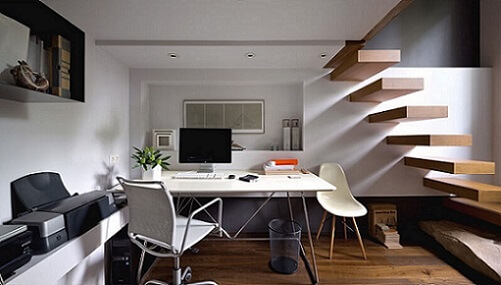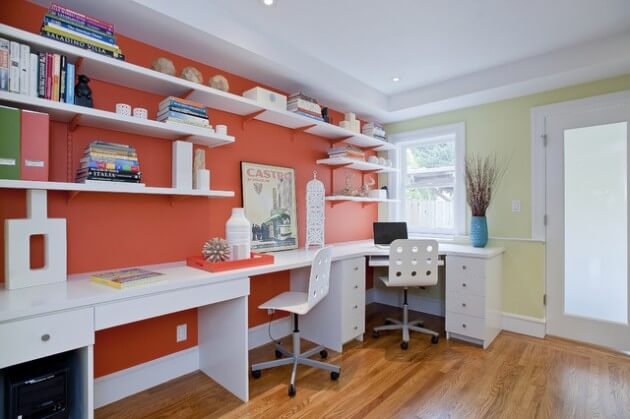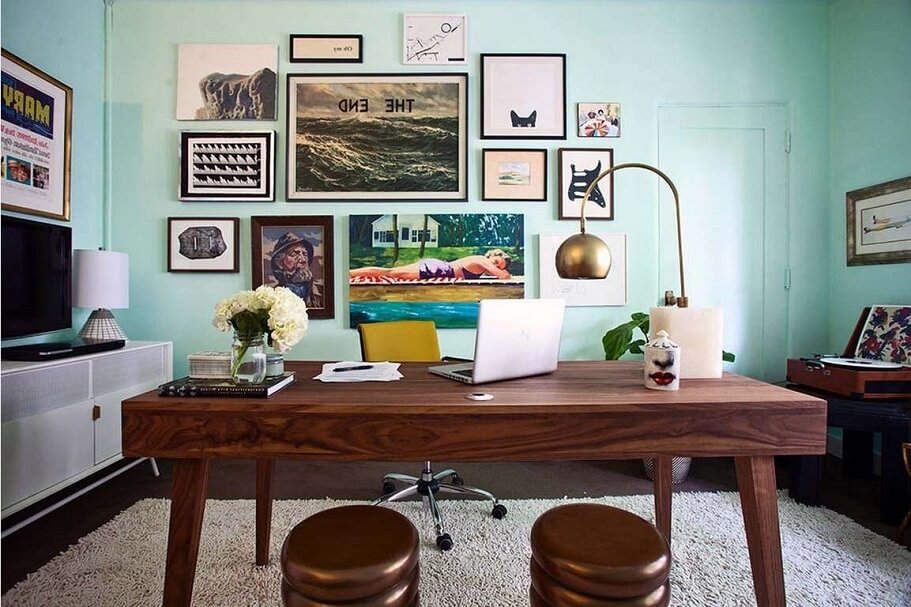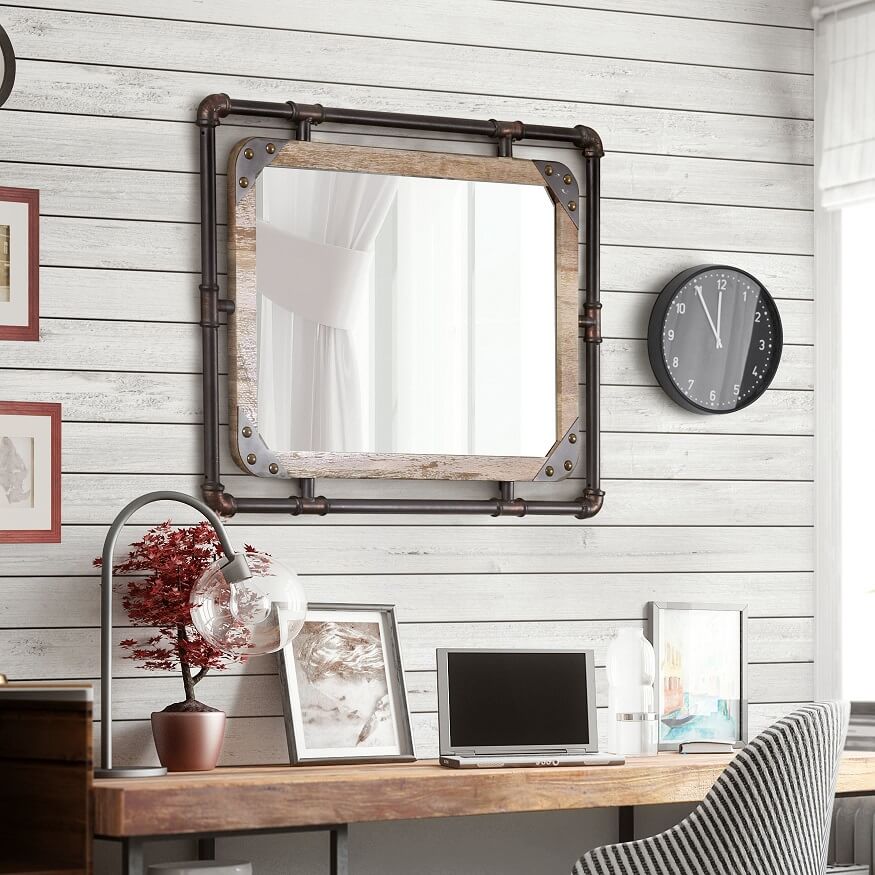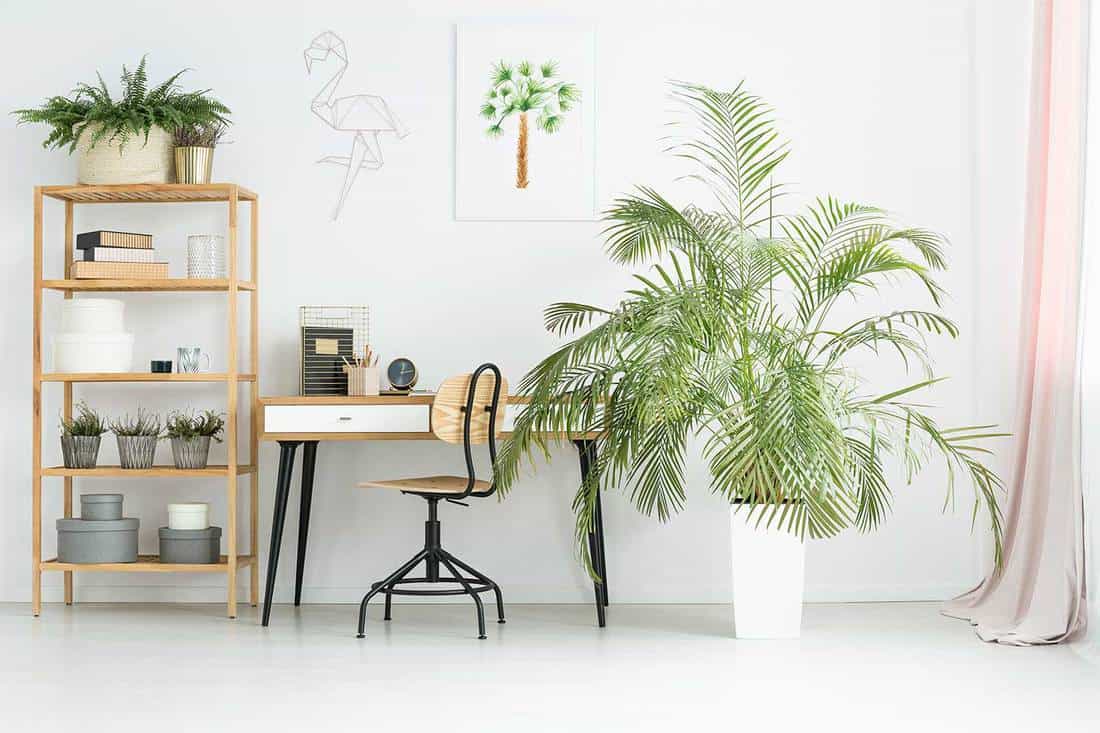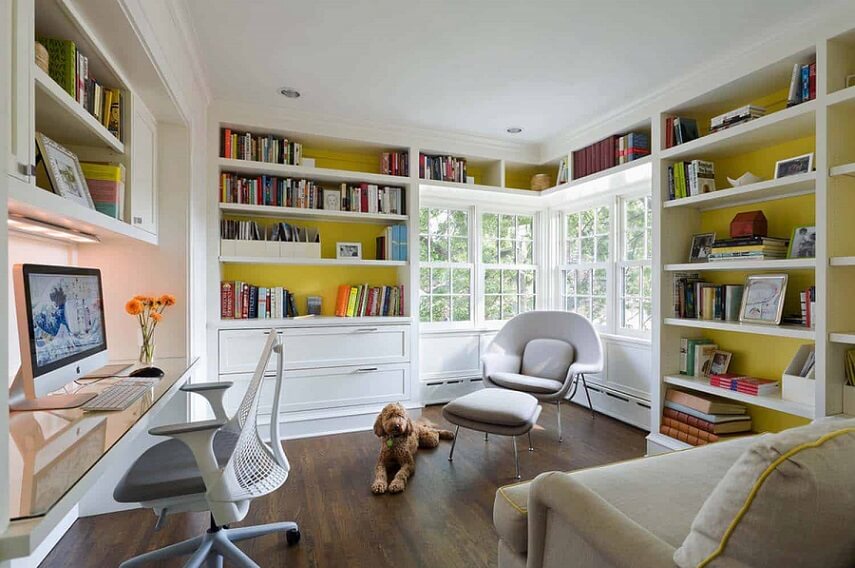Choosing the right space
Depending on your living situation, you might not have many options about where to locate your home office. Obviously, someone living in a studio apartment won’t have the luxury of setting up a dedicated office room. If you’ve got a spare bedroom or a finished basement, however, you’ll be able to consider your options.

It’s always best to set up your home office in a dedicated room if you have the possibility. There are several reasons for this. First of all, working in a separate room allows you to shut out distractions. If there are other people at home during your working hours, the noise and activity can be distracting. Having a dedicated home office also allows you to keep your work life and your home life physically separate – which helps maintain healthy mental separation too. Work/life balance doesn’t have to go out the window just because you’re working in your home.
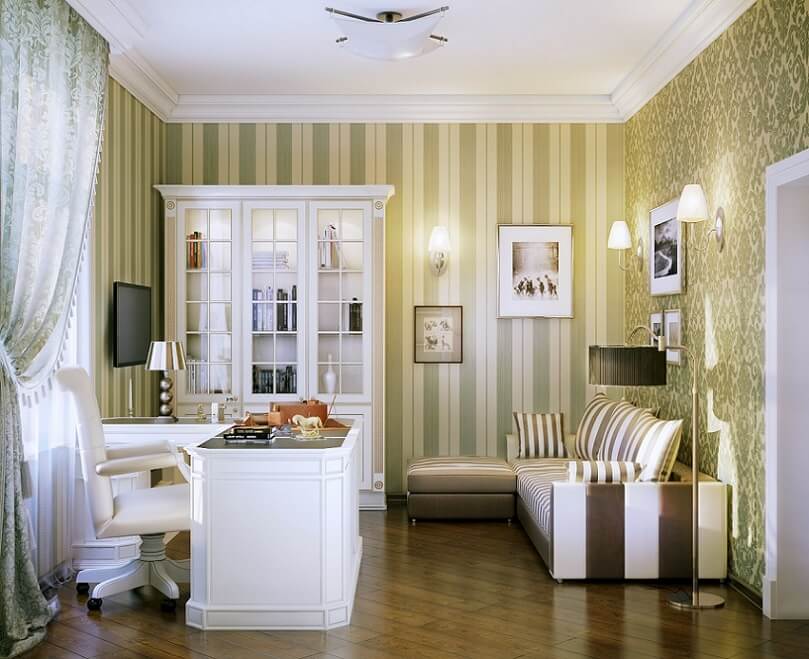
If your business necessitates having clients visit your home office, try to choose an office space located near the entrance to the home. That way, you don’t have to show clients your messy kitchen or your living room full of children’s toys.
Finally, consider how much room you’re going to need. Think about how much storage space you’ll need, how much furniture you’re going to have in your home office, and what the layout is going to look like. If all you need is a little desk space for your laptop, you might be able to set up your home office in the laundry room or even have an invisible office tucked into a closet. Conversely, if you know you’ll need mountains of documents and reference books, you’ll probably have no choice but to take over a whole room.

Once you’ve settled on a location for your home office, start considering what kind of style you’d like it to have. A room with a brick fireplace might inspire a rustic design, while a room with large windows might have you considering a modern, minimalist look. Having a clear idea of what you’d like your office to look like will help inform your decisions as you continue the process.
Designing your home office’s layout and choosing furniture
Once you know where you’re going to set up your home office, you can start thinking about how you’re going to lay it out. It’s very useful to plan the layout before you go any further. Having a plan will make it easier to choose furniture, storage options, and decorations. The layout that you design will depend on the size of the space, how big a desk you want, and how much storage space you need. It also will depend on the type of work that you do, but the majority of home-based work gets done via computer, so almost everyone is going to have a desk.
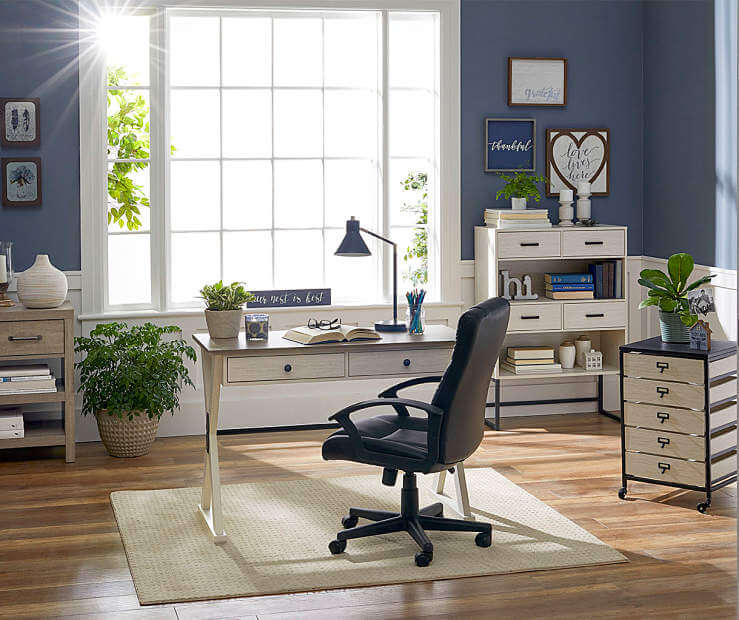
As you purchase furniture, equipment, and decorations for your home office, make sure to save receipts and keep a total of how much you’ve invested. Your insurer will want to know the value of your business property.
Create your workspace: desk ideas
If you’re taking over a whole room for your home office, the sky is the limit for desk options. A classic choice would be to have a large desk in the centre of the room, with your seat facing the door. You can also choose a long desk and place it against the wall. An L-shape desk tucked into a corner can be an efficient way to maximize desktop space while also keeping the room open. You can choose a massive U-shaped desk if you need even more desktop space, or if you just want that command centre vibe.
If you’re looking at a smaller home office, you may only have room for a small desk or table. Even so, make sure you have a dedicated desk for your work; shuffling work materials to and from the kitchen table is a sure-fire way to make you hate working at home.

Stand-up desks are a popular choice for people who don’t feel comfortable sitting in a chair all day long. Sitting down for eight-plus hours every day isn’t good for your health. Stand-up desks aren’t the best solution for everyone, though, since standing all day isn’t exactly healthy either. If you wish to have a stand-up desk, make sure you choose an adjustable model that allows you to alternate sitting and standing throughout the day.
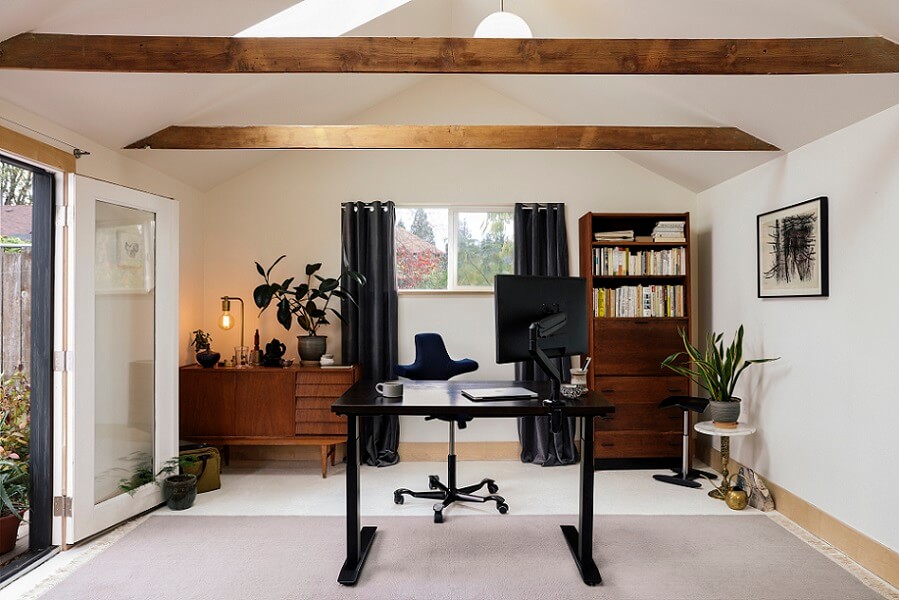
Stash your stuff: organization ideas
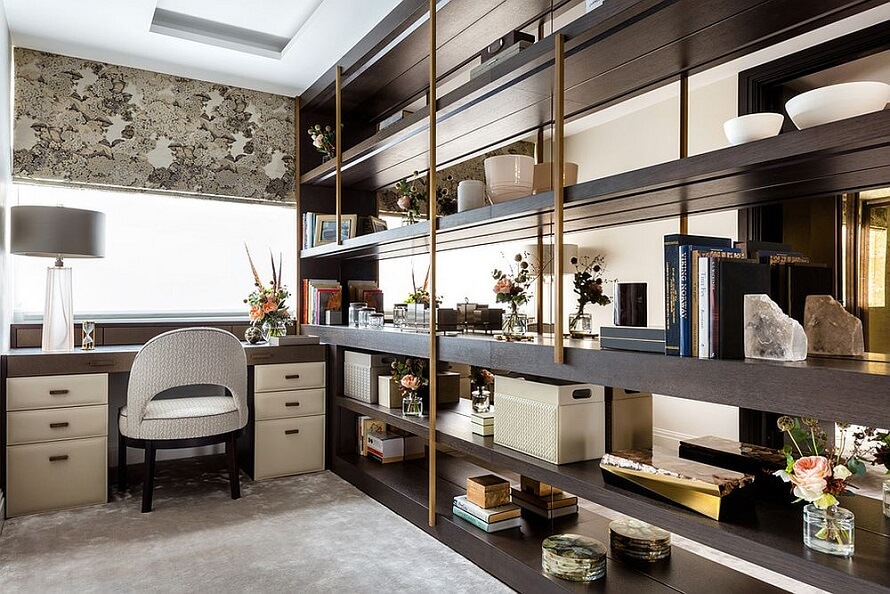
The amount of shelving and cabinetry you need for your home office is going to depend on the nature of your job. If your work is paperless and you don’t require any equipment aside from your computer, you may not need any storage space at all. If you don’t already, consider adopting a 100%-digital document policy and save everything in the cloud. Of course, it’s always nice to have office basics like pens and notepads on hand, so a desk with small drawers may suffice. You may also wish to add some extra shelving for decorations, even if you don’t need it for storage.

At the most-ambitious level, you have wall shelving as an option. And not just shelves attached to the wall, but shelves that are a wall. Converting an entire wall of your home office into floor-to-ceiling shelving provides a massive amount of storage space while also looking very good. If that’s a bit too much, freestanding shelving is a good idea too. It’s easy to find shelving units that can match the size and colour you’ll need.
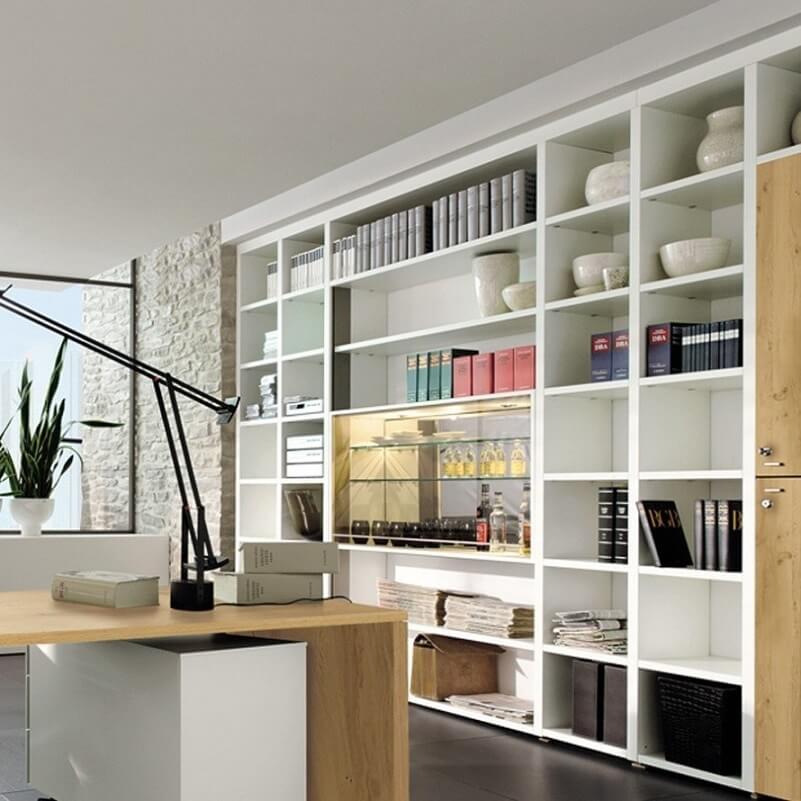
Open shelving has the unfortunate requirement that you keep a relatively clutter-free office space; if you aren’t quite that disciplined, you may opt for cabinets instead. Cabinets allow you to stash papers and knickknacks out of sight, keeping your office looking clean and tidy. If you’re designing your home office on a budget, stores like Ikea have plenty of options for modular shelving and storage.
See what you’re doing: lighting ideas
Good lighting is important for any home office. It can help you stay focused, reduce eye strain, and keep your energy levels up during dark, rainy days. Natural lighting is always the best option. However, if you’re setting up a basement home office or your chosen space has only a tiny window, you can make up the difference with a well-designed lighting plan.

First, you want to make sure that your office has even overhead lighting that illuminates the whole room. It doesn’t have to be blindingly bright, but it should be enough that you can see what you’re doing without having to strain your eyes. You can also add some task lighting to your work area, which can be as simple as a stylish desk lamp.
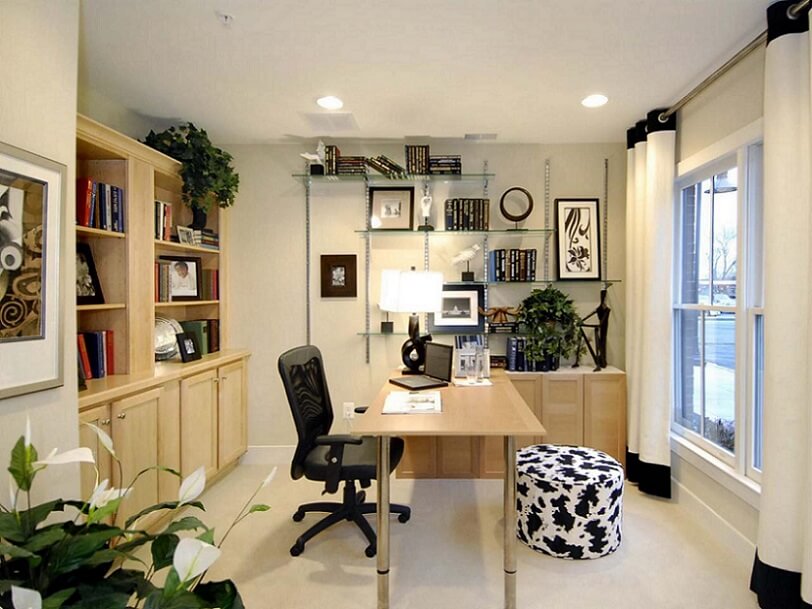
Finally, position your computer monitor so that there is no glare from the windows or lights; this is another way to reduce eye stress.
